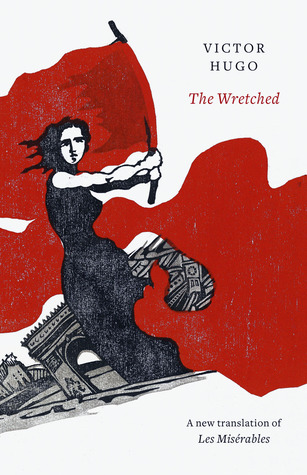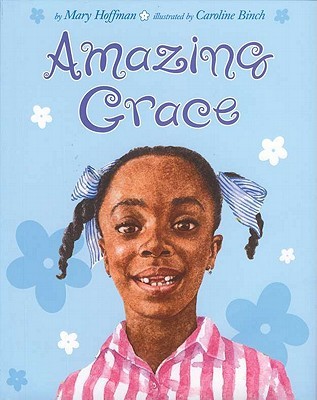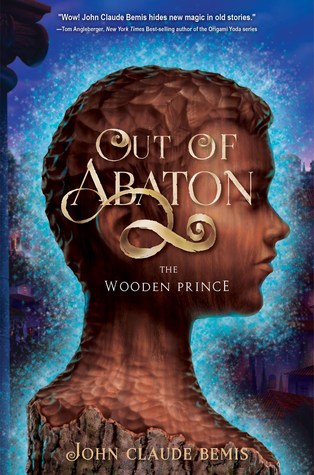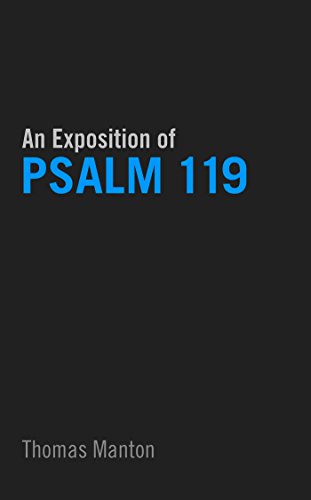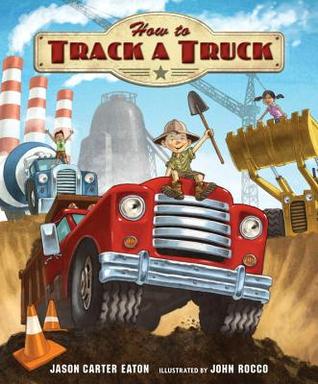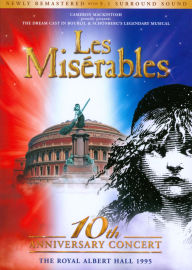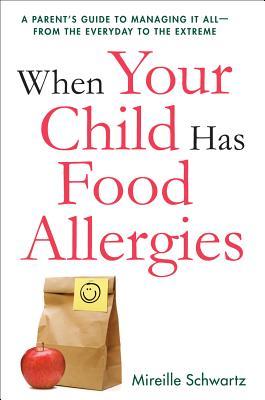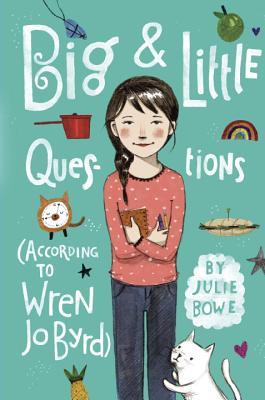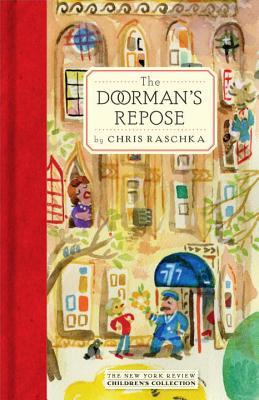Favorite picture book biography: I am Jim Henson. Brad Meltzer. Illustrated by Christopher Eliopoulos. 2017. 40 pages. [Source: Library]
Favorite graphic novel: Real Friends. Shannon Hale. 2017. 214 pages. [Source: Library]
Favorite short story collection: The Doorman's Repose. Chris Raschka. 2017. 184 pages. [Source: Library]
Favorite classic: Camille. Alexandre Dumas, fils. 1848. Translated by Edmund Gosse. 254 pages. [Source: Library]
Board books and picture books:
- Trains Don't Sleep. Andria Warmflash Rosenbaum. Illustrated by Deidre Gill. 2017. Houghton Mifflin Harcourt. 40 pages. [Source: Review copy]
- Counting with Tiny Cat. Viviane Schwarz. 2017. Candlewick. 32 pages. [Source: Review copy]
- Bird, Balloon, Bear. Il Sung Na. 2017. Random House. 32 pages. [Source: Library]
- I am Jim Henson. Brad Meltzer. Illustrated by Christopher Eliopoulos. 2017. 40 pages. [Source: Library]
- John Ronald's Dragons: The Story of J.R.R. Tolkien. Caroline McAlister. Illustrated by Eliza Wheeler. 2017. 48 pages. [Source: Library]
- Prickly Jenny. Sibylle Delacroix. 2015. 32 pages. [Source: Library]
- Tea with Grandpa. Barney Saltzberg. 2014. 40 pages. [Source: Library]
- How to Babysit a Grandpa. Jean Reagan. Illustrated by Lee Wildish. 2012. 32 pages. [Source: Library]
- How to Track a Truck. Jason Carter Eaton. Illustrated by John Rocco. 2016. Candlewick Press. 32 pages. [Source: Review copy]
- Mouse Paint. Ellen Stoll Walsh. 1989. 32 pages. [Source: Library]
- Extremely Cute Animals Operating Heavy Machinery. David Gordon. 2016. 48 pages. [Source: Library]
- Amazing Grace. Mary Hoffman. Illustrated by Caroline Binch. 1991. 32 pages. [Source: Library]
- Dogzilla. Dav Pilkey. 1993. 32 pages. [Source: Bought]
- Kat Kong. Dav Pilkey. 1993. 29 pages. [Source: Bought]
- Each Peach Pear Plum. Janet and Allan Ahlberg. 1978. 32 pages. [Source: Library]
- Dog Days of School. Kelly DiPucchio and Brian Biggs. 2014. 40 pages. [Source: Library]
- Board book:Peppa's First Pet (Peppa Pig) 2015. Scholastic. 16 pages. [Source: Review copy]
- Maisy Goes Swimming. Lucy Cousins. 2017. Candlewick. 16 pages. [Source: Review copy]
- Board book: Pug in a Truck. Nancy Coffelt. 2006/2015. Houghton Mifflin Harcourt. 32 pages. [Source: Review copy]
- Board book: Hush, Little Horsie. Jane Yolen. Illustrated by Ruth Sanderson. 2010. Random House. 32 pages. [Source: Review copy]
- Board book: Good Night, Peppa. (Peppa Pig) 2015. Scholastic. 16 pages. [Source: Board book]
- Board book: The Goodnight Train. June Sobel. Illustrated by Laura Huliska-Beith. 2006/2012. Houghton Mifflin Harcourt. 30 pages. [Source: Review copy]
- Board book: Time for Bed. Petr Horacek. 2014. Candlewick Press. 16 pages. [Source: Review copy]
- Miffy at the Library. Maggie Testa. 2017. Simon & Schuster. 32 pages. [Source: Library]
- Skunked. (Calpurnia Tate, Girl Vet #1) Jacqueline Kelly. 2016. 106 pages. [Source: Library]
- If You Lived In Colonial Times. Ann McGovern. 1964. 80 pages. [Source: Bought]
- Real Friends. Shannon Hale. 2017. 214 pages. [Source: Library]
- Big & Little Questions (According to Wren Jo Byrd). Julie Bowe. 2017. 240 pages. [Source: Library]
- The Doorman's Repose. Chris Raschka. 2017. 184 pages. [Source: Library]
- 44 Scotland Street. Alexander McCall Smith. 2005. 325 pages. [Source: Library]
- How To Train Your Dragon. Cressida Cowell. 2003. 214 pages. [Source: Library]
- The Doorman's Repose. Chris Raschka. 2017. 184 pages. [Source: Library]
- Skunked. (Calpurnia Tate, Girl Vet #1) Jacqueline Kelly. 2016. 106 pages. [Source: Library]
- Funeral in Blue. (William Monk #12) Anne Perry. 2001. 352 pages. [Source: Library]
- Vincent and Theo: The Van Gogh Brothers. Deborah Heiligman. 2017. 464 pages. [Source: Library]
- Funeral in Blue. (William Monk #12) Anne Perry. 2001. 352 pages. [Source: Library]
- Camille: A Play in Five Acts. Alexandre Dumas, fils. Translated by Matilda Heron. 1852. 72 pages. [Source: Library]
- Camille. Alexandre Dumas, fils. 1848. Translated by Edmund Gosse. 254 pages. [Source: Library]
- John Ronald's Dragons: The Story of J.R.R. Tolkien. Caroline McAlister. Illustrated by Eliza Wheeler. 2017. 48 pages. [Source: Library]
- I am Jim Henson. Brad Meltzer. Illustrated by Christopher Eliopoulos. 2017. 40 pages. [Source: Library]
- Anne of Green Gables Treasury. Carolyn Strom Collins and Christina Wyss Eriksson. 1991. 208 pages. [Source: Bought]
- The Novel of the Century. David Bellos. 2017. 320 pages. [Source: Library]
- When Your Child Has Food Allergies. Mireille Schwartz. 2017. 240 pages. [Source: Library]
- Vincent and Theo: The Van Gogh Brothers. Deborah Heiligman. 2017. 464 pages. [Source: Library]
- If You Lived In Colonial Times. Ann McGovern. 1964. 80 pages. [Source: Bought]
Christian nonfiction:
- Embodied Hope: A Theological Meditation on Pain and Suffering. Kelly M. Kapic. 2017. IVP. 197 pages. [Source: Review copy]
- How Does Sanctification Work. David Powlison. 2017. Crossway. 128 pages. [Source: Review copy]
- Matthew: All Authority in Heaven and On Earth. Douglas Sean O'Donnell. 2013. Crossway. 1090 pages. [Source: Bought]
- The Wisdom of God: Letting His Truth and Goodness Direct Your Steps. A.W. Tozer. Edited by James L. Snyder. 2017. Bethany House. 190 pages. [Source: Review copy]
- The Legacy of Luther. R.C. Sproul, editor. 2016. Reformation Trust. 308 pages. [Source: Review copy]
- A Description of Christ. Richard Sibbes. (1577-1635, Sibbes lifespan). 29 pages. [Source:Bought]
- Lifted: Experiencing the Resurrection Life. Sam Alberry. 2010/2012. P&R. 142 pages. [Source: Borrowed]
- RSV Bible. 1977. Oxford University Press. 1904 pages. [Source: Gift]
- A Survey of Church History, Part One: A.D. 100-600. W. Robert Godfrey. Twelve 23-Minute Messages. [Source: Gift]
- A Survey of Church History, Part Two: A.D. 500-1500. W. Robert Godfrey. Thirteen 23-Minute Messages. [Source: Gift]
- A Survey of Church History, Part Three: A.D. 1500-1620. W. Robert Godfrey. Twelve 23-Minute Messages. [Source: Gift]
- A Survey of Church History, Part Four: A.D. 1600-1800. W. Robert Godfrey. Twelve 23-Minute Messages. [Source: Gift]
- A Survey of Church History, Part Five: A.D. 1800-1900. W. Robert Godfrey. Twelve 23-Minute Messages. [Source: Gift]
- A Survey of Church History, Part Six: A.D. 1900-2000. W. Robert Godfrey. Twelve 23-Minute Messages. [Source: Gift]







